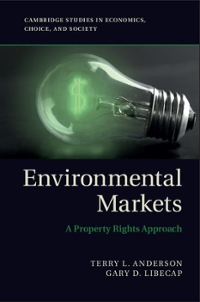how to answer these questions
30. Commercial banks and thrift (savings) institutions have become increasingly similar in recent years due to the A. creation of the Federal Reserve System B. stagflation of the late 1970s where the economy had a high UE rate and a high rate of inflation C. Depository Institutions Deregulation & Monetary Control Act of 1980 D. end of WW II and the growing manufacturing sector 31. In a fractional reserve banking system banks can create money through the lending process depending on the A. . amount of profit the banking system wants to earn B. amount of securities held C. level of excess reserves D. decisions made by Congress, both the House and the Senate 32. The multiple by which the commercial banking system can expand the supply of money is equal to the reciprocal of A. the marginal propensity to save (MPS) B. its actual reserves C. its excess reserves D. the reserve ratio 33. Open market operations refer to: A. purchases of stocks and bonds in the New York Stock Exchange B. central bank lending to commercial banks. C. the purchase or sale of government securities by the Federal Reserve's Open Market Operations Committee (FOMC). D. central banks lending to other central banks, 34. TRUE OR FALSE Lower bond prices decrease interest rates and higher bond prices increase interest rates.20. The federal funds rate is the interest rate that charges(s)_ for overnight loans to meet reserve amounts. A. banks; on federal student loans. B. the Fed; commercial banks. C. banks; their best corporate customers D. banks; other banks. 21. If you use currency to pay for your coffee or snack wherever it is you might buy coffee or a snack, you are using money primarily as A. a unit of account (measure of value). B. a store of value C. a medium of exchange D. an economic investment, Ig 22. Monetary aggregates or totals, such as M1 or M2, are used by Federal Reserve policy makers to track A. the amount of currency in the hands of the federal, state and local governments. B. the amount of currency requested by foreign traders in the foreign exchange markets. C. the amount of current in the hands of the households and businesses. D. the amount of money paid in taxes to federal, state and local governments each year. 23. A complimentary question to Question 22. M1 and M2 are two different measures of money in the U.S. economy. The difference between the two reflects: A. those components considered the "most liquid" and the amount of securities held. B. those components considered the "most liquid" and those considered to be "near monies." C. nothing, there is really no difference between M1 and M2 D. those components considered the "most liquid" and credit/debit cards.23. A complimentary question to Question 22. M1 and M2 are two different measures of money in the U.S. economy. The difference between the two reflects: A. those components considered the "most liquid" and the amount of securities held. B. those components considered the "most liquid" and those considered to be "near monies." C. nothing, there is really no difference between M1 and M2. D. those components considered the "most liquid" and credit/debit cards. 24. The money supply is backed: A. by government bonds, to encourage borrowing and lending. B. dollar for dollar with gold and silver. C. dollar for dollar with the Euro, as one of the country's major trading partners. D. by the government's ability to control the supply of money (via the Fed) to keep its value relatively stable. 25. TRUE or FALSE . The basic policy making body for federal fiscal policy is the Board of Governors of the Federal Reserve system. 26. The twelve Federal Reserve Banks: A. are owned and operated by the U.S. Treasury. B. were created in 1776 and ratified again in 1913. C. hold the reserve deposits of commercial banks and other lending institutions. D. are also known as national banks. 27. The U.S. Savings & Loan (S&L) Crisis of the 1990s was caused, in part, by_ A. the recession of 1981-1982 B. rising interest rates led investors to switch from S&L to other financial assets paying higher interest rates C. dangerous speculation in land/property and junk bonds D. all of the above 28. TRUE or FALSE An important routine function of the Federal Reserve Bank is to provide facilities by which individual householders or businesses may make deposits and cash cheques. 29. TRUE or FALSE The basic goal of the twelve Federal Reserve Banks is to control the money supply and interest rates in order to promote the profit level of the Federal Reserve System









